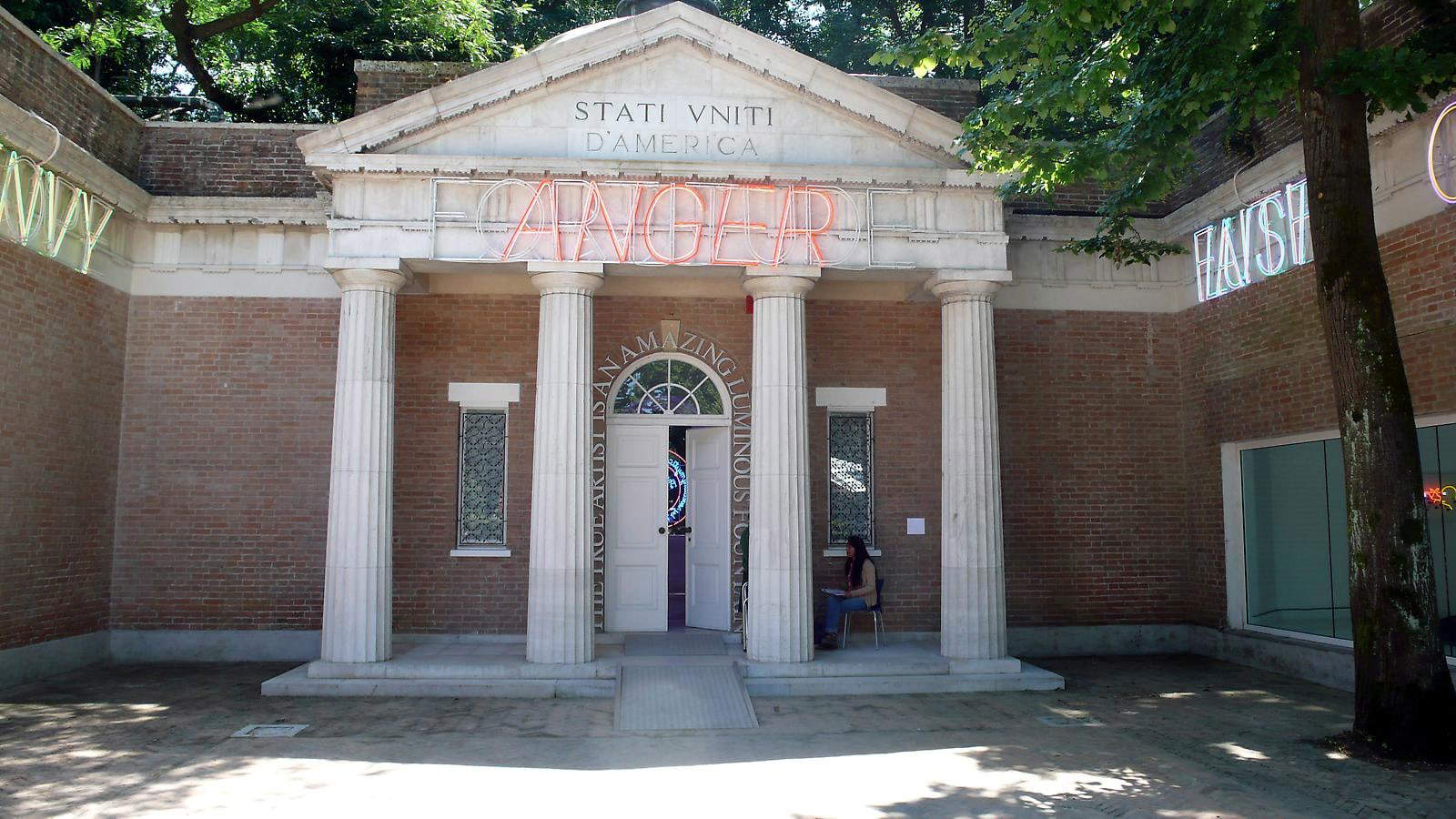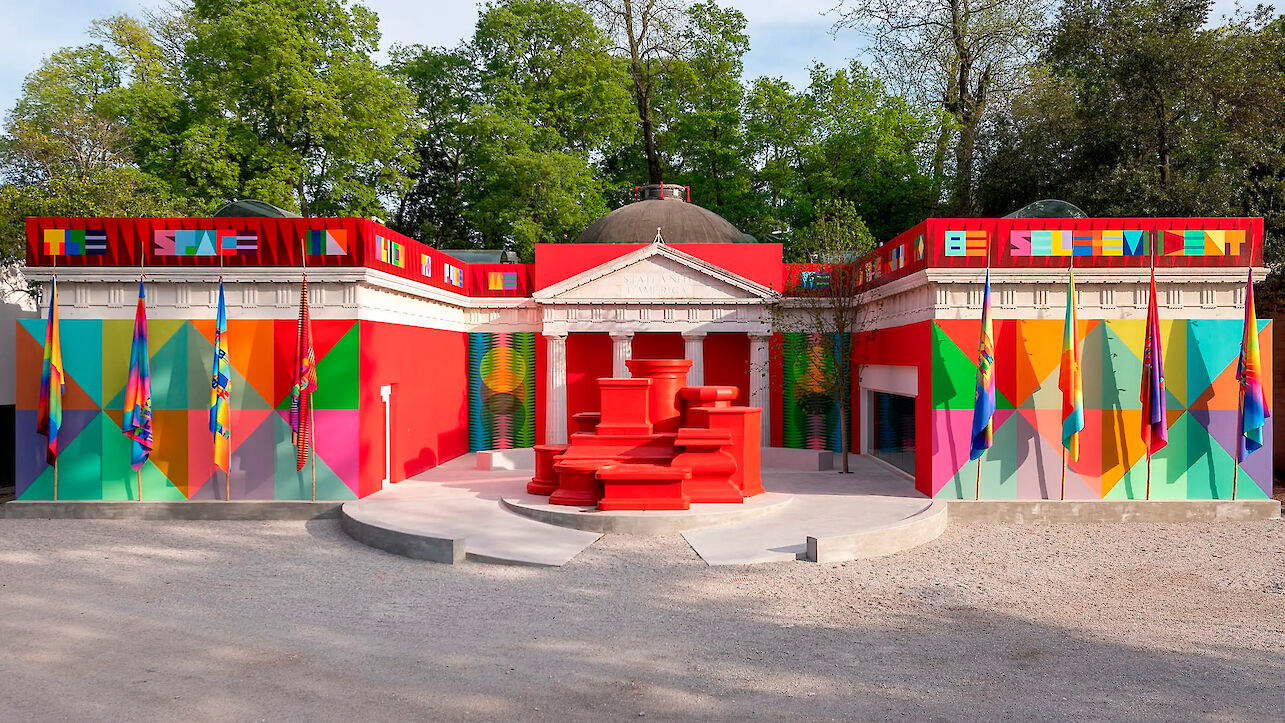Make America Great Again... also at the Venice Biennale. Will the next U.S. Pavilion at the 2026 Art Biennale be a celebration of Trump’s America? It’s likely, given the guidelines just issued by the U.S. State Department’s Bureau of Educational andCultural Affairs (ECA): in fact, the call for proposals to support the creation of the exhibition that the U.S. will present at the next biennale was published yesterday. The U.S. Pavilion, designed in 1929 in the neoclassical style, is owned by the Solomon R. Guggenheim Foundation and is managed operationally by the Peggy Guggenheim Collection in Venice, and has always been considered by the U.S. administration to be a “high-profile platform for illustrating the innovation, ingenuity, high artistic merit and breadth of the American art community.” Natural, then, that it also reflects the orientations of those who govern the country.
The official document with selection criteria (also valid, by the way, for the 2028 Biennial) details objectives, funding arrangements, eligibility criteria and application procedures. The program aims to showcase works of art to international audiences that are capable of promoting “American values and fostering dialogue on shared global challenges,” the announcement reads. In fact, the program’s goals go beyond mere artistic display. It aims, in particular, to “counter negative stereotypes” about the U.S. and to support “U.S. foreign policy objectives by enabling U.S. cultural experts to interact with important foreign audiences around the world.” Participation in the Biennale, the document further states, is also an opportunity to “promote the creativity and entrepreneurship of American artists and cultural institutions, developing new partnerships and expertise.” Still, the U.S. Pavilion is to “enhance the diversity and high artistic value of the United States and increase awareness and understanding of U.S. culture, values and society among participants and international audiences,” and then again “enable foreign audiences to learn about U.S. culture, society, and institutions,” as well as “establish lasting relationships and ties between U.S. and foreign audiences, colleagues, and institutions to cultivate the exchange of knowledge and expertise for the benefit of participating communities.”

This is an important change of pace from the last call for proposals, issued under the Biden administration: in that case, the U.S. foreign policy goals, namely “diversity and inclusion, environment, health and food security, human rights, self-determination, resilience, and response to shared global challenges,” were precisely specified. In the current announcement, these goals have all been removed (the only one remaining is the generic “response to global challenges”). Not only that: for the 2024 pavilion, the evaluation of elements such as diversity, inclusion, human rights, and environmental sustainability used to give points during selection. This year, however, there are only two elements of evaluation on the project’s ability to demonstrate U.S. foreign policy goals, which were not in the call for entries for the 2024 Biennale: “to promote peaceful relations between the United States and other nations” and “to promote a comprehensive international understanding of American values and policies.” In addition, in the criteria for artistic excellence, the new call adds one: the “ability to showcase American exceptionalism and innovation.”
Other differences can be seen in the “artistic merit” selection criteria: the word "diversity“ in the criterion ”Representation of the vitality and/or diversity of the U.S. arts community“ has been replaced with the word ”range"; the incentive to provide public programs for communities disadvantaged communities located around Venice; removed the reference to the Biennale as a chance to engage diverse audiences including youth, women, and disadvantaged communities beyond the exhibition site (the Trump announcement speaks more generically of an array of audiences, or a “range of audiences”). Finally, one of the main evaluation criteria of the Biden ban, which gave 20 points to the project (out of a total of 80), namely support for equity and disadvantaged communities (“proposals,” it read, “must clearly demonstrate how the program will support and promote equity and will involve disadvantaged communities in the management, design and implementation of the program”), has been deleted and replaced with a “Promotion of American Values” criterion, which carries the same weight (25 points out of a total of 100): “Proposals,” the Trump proclamation states, “must clearly demonstrate how the program will work to promote the interests of the United States in the administration, design, and implementation of the program.”

Thus, a pavilion is already looming that will carry forward the narrative of “American values” so far advocated by the Trump administration, which, however, has not cut the public budget: in fact, the call for proposals calls for a maximum of $375.000 in funding (€330,000 at current exchange rates), of which $125,000 (€110,000) is earmarked for the operational management of the Pavilion and $250,000 (€220,000) can be used for production, set-up, transportation of works and curatorial travel. This is the same amount that the ECA had made available for the 2024 Pavilion, which, however, overall had a budget of $5.8 million: all the rest, in fact, had been provided by private donors. For comparison, Italy’s Pavilion had cost 1.2 million euros, of which 800,000 was guaranteed by the public purse, and in this case by the Ministry of Culture’s General Directorate for Contemporary Creativity, and the other 400,000 came from private sponsors(here all the costs of the national pavilions at the 2024 Biennale).
U.S. nonprofit organizations, as well as curators and artists who are citizens or permanent residents of the United States, are eligible to apply. The deadline is set for July 30, 2025, with results announced by September. Dates for the 2028 Biennial are also set: projects must arrive between Nov. 1, 2026, and Jan. 30, 2027, and notice of winners will be given in April 2027.
 |
| Here's how Trump would like the U.S. Pavilion at the Venice Biennale 2026: ban published |
Warning: the translation into English of the original Italian article was created using automatic tools. We undertake to review all articles, but we do not guarantee the total absence of inaccuracies in the translation due to the program. You can find the original by clicking on the ITA button. If you find any mistake,please contact us.